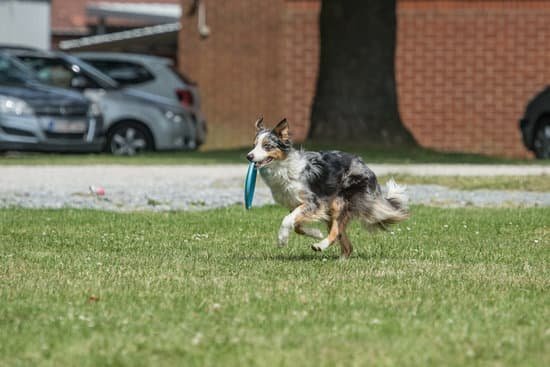Service dogs play an essential role in society, providing invaluable assistance and support to individuals with disabilities. From guiding the visually impaired to alerting those with hearing impairments, service dogs are trained to perform specific tasks that enhance the quality of life for their handlers.
If you have a dog that you believe has the potential to become a service dog, this article will guide you through the training process. Whether you are considering training your own service dog or seeking professional assistance, understanding the importance and benefits of having a trained service dog is crucial.
Service dogs are highly trained animals that undergo rigorous training to provide various forms of assistance to individuals with disabilities. Their immense value lies not only in their ability to perform tasks but also in their unwavering dedication and loyalty towards their handlers. A properly trained service dog can bring independence, confidence, and improved well-being to those in need.
Having a trained service dog can substantially enhance daily life for individuals with disabilities. These specially trained companions can assist with activities such as opening doors, retrieving items, turning on lights, and even detecting certain medical conditions like seizures or low blood sugar levels. The unconditional love and companionship provided by a service dog can also have remarkable emotional benefits, reducing stress and anxiety while increasing overall happiness.
In the following sections of this article, we will delve into the qualities and temperament needed in a service dog, establishing a strong foundation through basic obedience training, advanced skills required for specialized tasks, public access training for acclimatizing your dog to different environments, behavioral challenges during training and techniques for providing emotional support. We will also explore legal considerations surrounding service dogs’ rights and certifications as well as guiding you through the final steps of certification and registration.
By following these steps diligently and consistently, your journey toward training your very own certified service dog begins here.
Qualities and Temperament Needed in a Service Dog
A service dog plays a crucial role in assisting individuals with disabilities and providing support in their day-to-day lives. To become an effective service dog, certain qualities and temperaments are necessary. This section will explore the desirable characteristics for a service dog and provide guidance on assessing your own dog’s suitability for service dog training.
Desirable Characteristics for a Service Dog
Not all dogs possess the temperament and qualities required to become a service dog. Ideally, a service dog should exhibit traits such as intelligence, trainability, adaptability, calmness, and reliability. Intelligence is vital as it helps the dog to understand complex commands and perform tasks accurately. Trainability ensures that the dog can learn new skills efficiently and follow instructions consistently.
Adaptability is essential for a service dog as they need to be comfortable in various environments with different people and situations. Calmness is another fundamental trait since service dogs must remain composed under stressful or challenging circumstances. Lastly, reliability refers to the ability of the dog to consistently perform assigned tasks without getting distracted or behaving unpredictably.
Assessing Your Dog’s Suitability for Service Dog Training
Before embarking on service dog training, it is important to evaluate your own dog’s suitability for this demanding role. You can start by considering your dog’s breed, size, age, overall health, temperament, and physical abilities.
Certain breeds are known for having characteristics that make them suitable candidates for service work. For instance, Labrador Retrievers and Golden Retrievers are often chosen due to their intelligence, loyalty, trainability, and friendly temperament. However, any breed of dog can potentially become a successful service animal if they possess the desired qualities.
Next, consider your dog’s age and overall health condition. Younger dogs tend to have more energy but may require more time to mature mentally before undergoing extensive training. Dogs with chronic health issues may not be physically capable of performing certain tasks. It is important to consult with a veterinarian to ensure your dog is fit for service work.
In addition, evaluate your dog’s temperament. They should be naturally calm and confident, without displaying fear, aggression, or excessive shyness. Temperament assessments by professional trainers or behaviorists can help determine whether your dog has the necessary qualities for becoming a service dog.
By carefully considering these factors and getting professional guidance if needed, you can make an informed decision about your dog’s suitability for service dog training. Remember that not all dogs are meant to be service dogs, but there are various other roles where they can excel and contribute positively to society.
Establishing a Strong Foundation
Basic obedience training is the cornerstone of service dog training. It provides the essential skills and behaviors that form the foundation for more advanced tasks and tasks specific to service dog work. In this section, we will delve into the importance of basic obedience training in service dog training and provide a step-by-step guide to teaching basic commands.
The Importance of Basic Obedience Skills in Service Dog Training
Having a well-behaved and obedient dog is crucial for a service dog. Basic obedience skills lay the groundwork for effective communication between the handler and the service dog, ensuring that they can effectively perform their tasks in various situations. These skills include but are not limited to sit, stay, come, lie down, leave it, and heel.
Training your service dog in basic obedience creates a solid framework upon which more complex tasks can be built. Additionally, it establishes trust and enhances the bond between you and your dog, which is fundamental for successful teamwork in any service dog partnership. With consistent practice and positive reinforcement techniques, your dog will become reliable and responsive to commands, making them an asset both at home and in public settings.
Step-by-Step Guide to Teaching Basic Commands
Teaching basic commands requires patience, consistency, and positive reinforcement. Here is a step-by-step guide to help you train your service dog in some fundamental obedience skills:
- Start with one command: Begin by selecting one command such as “sit” or “stay.” Choose a quiet location with minimal distractions.
- Use treats as motivators: Hold a treat close to your dog’s nose while saying the command clearly. Gently guide their body into the desired position (e.g., sitting) while praising them effusively.
- Reinforce learning with rewards: When your dog successfully performs the command, promptly reward them with praise and a treat. This positive reinforcement will reinforce the desired behavior and motivate them to continue obeying commands.
- Repeat and practice: Repeat these steps multiple times throughout the day, gradually phasing out the use of treats but continuing with praise. Implement short training sessions several times a day to maintain engagement and focus.
- Add more commands: Once your dog has mastered one command, move on to teaching another command. Proceed with the same steps as before, gradually increasing the complexity of the commands over time.
Remember, each dog learns at their own pace, so be patient and adapt your training methods to suit your dog’s individual needs. Celebrate small achievements along the way and never punish or scold your service dog during training sessions as it can undermine their confidence and hinder progress. Positive reinforcement is the key to fostering trust, respect, and a strong foundation of obedience skills in your service dog.
Advanced Training
Once your dog has mastered basic obedience training, it’s time to move on to advanced training and teach them the specialized skills that make them valuable service dogs. These specialized skills are essential for helping individuals with disabilities or medical conditions in their day-to-day lives. In this section, we will discuss the specific tasks that service dogs can assist with and provide techniques for training these tasks effectively.
Defining the specific tasks a service dog can assist with:
Service dogs are trained to perform a wide range of tasks depending on the needs of their handler. These tasks can include retrieving items, opening doors, turning lights on and off, alerting to sounds or alarms, providing balance support, guiding visually impaired individuals, and even detecting certain medical conditions such as seizures or changes in blood sugar levels.
It is important to identify which tasks are most relevant to your disability or condition and focus on teaching your service dog those specific skills.
Techniques for training specialized tasks:
Training specialized tasks requires consistency, patience, and positive reinforcement. One effective technique is breaking down each task into small steps and using a shaping method to help your dog understand what you want them to do. For example, if you want your service dog to retrieve items for you, start by rewarding them for simply picking up an object. Gradually increase the difficulty by asking them to hold the item longer or retrieve it from different locations.
Using visual or verbal cues is also helpful in training specialized skills. For instance, if you want your service dog to open doors for you, use a verbal command like “open” while simultaneously showing them how to push the door with their paw or nose. Be consistent in using these cues during training sessions until your dog can perform the task reliably.
Remember to always reward your dog’s successful completion of a task with praise, treats or playtime. Consistency and frequent practice sessions are key in reinforcing these specialized skills and ensuring that your service dog is fully trained.
By providing your dog with advanced training in specialized tasks, you are equipping them with the necessary skills to become a service dog that can make a significant difference in someone’s life. The next section will cover an important aspect of training – preparing your dog for public spaces.
Public Access Training
Once your service dog has mastered basic obedience training and specialized skills, it is crucial to prepare them for the challenging environments and distractions they will encounter in public spaces. Public access training is an essential step in ensuring that your service dog can remain calm, focused, and well-behaved while providing support to you in various locations.
One of the first steps in public access training is gradually introducing your dog to different environments. Start by taking them to quiet places with minimal distractions, such as parks or empty parking lots. As your dog becomes more comfortable, gradually increase the level of difficulty by exposing them to busier areas like shopping malls or restaurants.
Desensitization exercises play a vital role in helping your service dog maintain calm behavior during public outings. These exercises involve exposing your dog to common stimuli found in public spaces, such as loud noises, crowded areas, or other animals. By gradually increasing exposure and rewarding positive behavior, you can help your dog become accustomed to these stimuli without becoming anxious or distracted.
Maintaining focus amidst distractions is another crucial aspect of public access training. During this stage, it is important to regularly practice obedience commands and cues in various settings. Start with simple commands and gradually progress to more complex tasks as your dog becomes more proficient at maintaining focus despite distractions.
| Suggestions for Public Access Training |
|---|
| Gradually introduce your dog to different environments |
| Start with quiet places with minimal distractions |
| Gradually increase difficulty by exposing them to busier areas |
| Conduct desensitization exercises to common stimuli |
| Reward positive behavior and gradually increase exposure |
| Regularly practice obedience commands and cues in various settings |
| Start with simple commands and progress to complex tasks |
Canine Good Citizen Certification
The Canine Good Citizen (CGC) certification is an official title that can be earned by service dogs and other well-behaved dogs. It is a program designed to evaluate the obedience and social skills of dogs in various real-life situations. This certification serves as a testament to the training and behavior of a service dog, showing that they are reliable and well-mannered in public settings.
To prepare your service dog for the CGC evaluation, it is important to first ensure that they have a solid foundation in basic obedience training. This includes commands such as sit, stay, come, and loose-leash walking. It is essential that your service dog responds promptly and reliably to these commands before moving on to the more advanced tasks required for the CGC certification.
Once your service dog has mastered basic obedience skills, you can begin working on the specific exercises outlined in the CGC evaluation. These exercises include demonstrating good manners when greeting strangers, sitting politely for petting, walking through a crowd with ease, staying calm during distractions, and more. It is important to practice these exercises in different environments and with various distractions to ensure that your service dog can maintain their focus and composure under different circumstances.
By earning the CGC certification, not only will your service dog gain recognition for their training accomplishments, but it will also help establish credibility and legitimacy when accessing public spaces or participating in certain activities. Many organizations require CGC certification as a prerequisite for accepting service dogs into their programs or facilities.
| Canine Good Citizen Certification | Earning an Official Title |
|---|---|
| Program Purpose | Evaluate obedience and social skills of dogs in real-life situations |
| Preparation | Solid foundation in basic obedience training |
| Specific Exercises | Demonstration of good manners, calm behavior in various situations |
| Benefits | Credibility and legitimacy when accessing public spaces or activities |
Behavior and Emotional Support
Training a service dog can be a challenging process, and it is important to address any behavior issues that may arise during the training. Recognizing and managing these challenges will not only ensure the success of the training but also contribute to the overall well-being of your service dog.
One common behavior issue that may occur during training is disobedience or difficulty in focusing. It is essential to remember that dogs are individuals with their own personalities, and they may have some unique challenges. Patience and consistency are key when addressing these issues.
To address disobedience or difficulty in focusing, consider breaking down the tasks into smaller steps and gradually increase their complexity as your dog gains proficiency. Additionally, positive reinforcement techniques such as rewards or treats can be used to motivate your dog and reinforce desired behaviors. Consistent practice sessions with clear communication between you and your service dog will help build a stronger bond and improve their performance.
Another crucial aspect of service dog training is providing emotional support for your canine companion. Service dogs often encounter new environments, loud noises, or unexpected situations while accompanying their handlers in public spaces. These experiences can sometimes cause stress or anxiety in dogs.
To provide emotional support for your service dog, it is essential to create a calm and reassuring environment during training sessions. Training should be conducted at a pace that allows your dog to feel comfortable and safe. Using techniques such as desensitization exercises can help them adapt to different environments gradually. Gradually exposing them to various stimuli like crowded places or loud noises will help them become more confident and composed in public settings.
Remember that each dog is unique, and some may require additional support or specialized training methods depending on their specific needs. Seeking guidance from professional trainers or behaviorists who specialize in working with service dogs can be extremely beneficial when addressing behavioral challenges.
By taking the time to address behavior issues effectively and provide emotional support throughout the training process, you will be better equipped to help your dog become a reliable and confident service dog.
Legal Considerations
Understanding the legal considerations surrounding service dogs is essential for anyone training a service dog. There are federal laws in place that protect the rights of individuals with disabilities to have and use a trained service dog. These laws ensure equal access and accommodation in public spaces, housing, employment, and transportation. However, it is crucial to also familiarize oneself with local laws and regulations as they may impose additional requirements or restrictions.
At the federal level, there are two primary laws that protect the rights of service dog handlers: the Americans with Disabilities Act (ADA) and the Air Carrier Access Act (ACAA). The ADA applies to all areas open to the public and guarantees individuals with disabilities the right to be accompanied by their service dog.
This includes restaurants, stores, hotels, schools, and other places of public accommodation. Under the ADA, service dogs are defined as dogs that have been individually trained to perform tasks that mitigate their handler’s disability.
The ACAA specifically pertains to air travel and ensures that disabled individuals can fly with their service dogs without discrimination or extra fees. Airlines are required to accommodate both emotional support animals (ESA) and psychiatric service animals (PSA), in addition to traditional service dogs. However, there may be specific documentation requirements or advanced notice needed when traveling by air with a service dog.
It is crucial for those training a service dog to educate themselves on these laws to understand their rights as well as their responsibilities. Familiarizing oneself with local regulations is also important since some states or cities may have additional requirements for owning and using a service dog. By understanding these legal considerations, individuals can confidently navigate public spaces with their trained service dogs while advocating for their rights if necessary.
Final Steps
Certification and registration are the final steps in the process of training a service dog. While these steps are not legally required, they can provide important benefits and protections for both the dog and handler.
Obtaining a valid service dog certification is crucial for several reasons. Firstly, it provides official documentation that your dog has successfully completed the necessary training to become a service dog. This can be useful when accessing public spaces or traveling with your dog, as many establishments and transportation services require proof of certification.
Additionally, certification can help protect you from potential legal issues. In some cases, individuals may try to pass off their pet as a service animal without proper training or qualifications. By having a valid certification for your service dog, you have evidence that your dog is indeed trained and qualified to assist you with your disability.
When it comes to registration, it is important to properly register your service dog for identification purposes. Registration typically involves providing information about yourself and your service dog, such as their breed, age, and training history. This information is then recorded in a database accessible by authorities or businesses, which can help facilitate easier access to public spaces and accommodations.
It’s important to note that there is no official government-run registry for service dogs in most countries. However, there are various online registries that offer registration services. When selecting an online registry, it is essential to do thorough research and ensure that the registry you choose is reputable.
Conclusion
In conclusion, training your dog to become a certified service dog is a journey that requires dedication, patience, and perseverance. Throughout this process, you have learned about the importance of service dogs in society and the countless benefits they provide. You have also gained an understanding of the qualities and temperament needed in a service dog and how to assess your own dog’s suitability for this role.
Establishing a strong foundation through basic obedience training is crucial in preparing your dog for advanced skills. By following a step-by-step guide to teaching basic commands such as sit, stay, and come, you have laid the groundwork for more specialized tasks that your service dog will eventually learn.
Public access training is another vital aspect in ensuring that your service dog can navigate different environments and distractions with ease. The acclimatization and desensitization exercises you have implemented will help maintain calm behavior in public spaces, enabling your dog to perform their duties effectively.
Throughout this journey, it is essential to address any behavior issues that may arise during training and provide emotional support to your service dog. Recognizing and managing these challenges will contribute to the success of your training program.
Lastly, it is important to familiarize yourself with the legal considerations surrounding service dogs. Understanding federal laws protecting service dog rights and educating yourself on local regulations will ensure that you and your service dog are able to navigate public spaces without unnecessary complications.
Overall, training a certified service dog is an incredible accomplishment that requires time, effort, and commitment. But the rewards are immeasurable as you witness firsthand how your trained companion can positively impact the lives of not only yourself but also those around you.
If you are considering embarking on this journey or are already on it, remember that there are resources available such as organizations specializing in service dog training that can offer guidance along the way. Good luck on your path towards certification.
Frequently Asked Questions
Can I train my dog to be a service dog by myself?
Training a dog to be a service dog by yourself is possible, but it can be challenging and time-consuming. Becoming a service dog requires extensive training in specialized tasks and obedience skills that enable them to assist individuals with disabilities.
While there are resources available such as books, online tutorials, and training guides, it is important to have a solid understanding of dog training techniques and the specific requirements of a service dog. Additionally, professional guidance from experienced trainers can greatly enhance the success of training your dog for this role.
How hard is it to train a dog to be a service dog?
Training a dog to become a service dog is generally considered to be a complex task that requires dedication, consistency, and patience. It involves teaching intricate tasks tailored to an individual’s needs as well as developing impeccable obedience and socialization skills. The difficulty level may vary depending on factors like the breed, temperament, and previous training experience of the dog.
Some dogs may naturally possess traits that make them more suited for service work, while others might require extra time and effort to acquire the necessary skills. Overall, the process of training a service dog can be demanding but also incredibly rewarding.
Is it ever too late to train a dog to be a service dog?
While it’s generally ideal to begin training a potential service dog at an early age when they are most receptive to learning, it is never too late to train a dog for this purpose. Dogs are capable of learning throughout their lives, and older dogs can still benefit from proper training methods and guidance. However, it is important to consider certain limitations that may arise with age or prior experiences.
Older dogs might have established behavior patterns or health issues that could affect their ability to meet the rigorous demands of being a service dog. Therefore, assessing the individual characteristics of the specific dog and consulting with trainers or professionals knowledgeable in service animal training would help determine if it’s feasible to train them for this role later in life.

Welcome to the blog! I am a professional dog trainer and have been working with dogs for many years. In this blog, I will be discussing various topics related to dog training, including tips, tricks, and advice. I hope you find this information helpful and informative. Thanks for reading!





